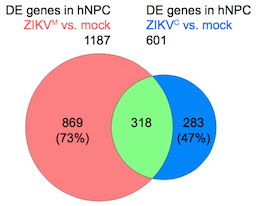At the American Association for the Advancement of Science meeting in Boston last weekend, Emory Vaccine Center researcher Mark Mulligan presented some limited findings on immune responses in Zika-infected humans, who were returned US travelers or expatriates.
The results were intriguing, despite the small number of study participants: five, two of whom were pregnant. Detailed information has not been available about immune responses against Zika in humans, especially T cell responses.
Highlights from Mulligan’s abstract:
*All five seemed to have a hole in their immune systems – functional antiviral “killer” CD8 T cells were rare, despite activation of CD8 T cells in general and strong responses from other cell types.
*Cross-reactive immune responses, based on previous exposure to dengue and/or yellow fever vaccine, may have blunted Zika’s peak.
*”Even with prolonged maternal viremia, both pregnancies resulted in live births of apparently healthy babies.” Read more





